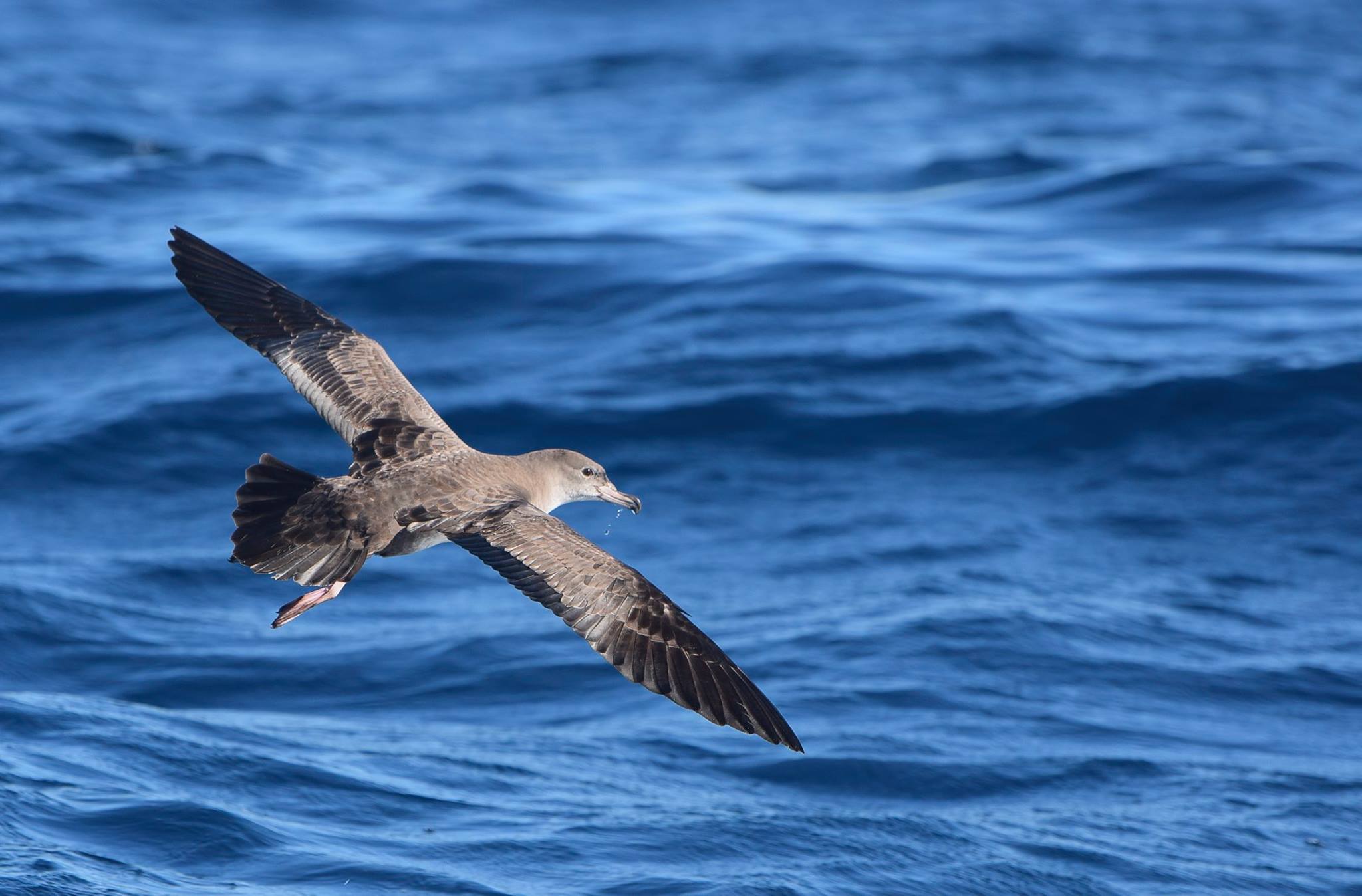Josh Adams (United States Geological Survey, Santa Cruz, California, USA) and colleagues have published open access in the online journal Marine Ornithology on diving behaviour of ACAP-listed and globally Vulnerable Pink-footed Shearwaters Ardenna creatopus.
The paper’s abstract follows:
“Recent information reporting Pink-footed Shearwater Ardenna creatopus mortality from fisheries bycatch throughout its range has encouraged fisheries managers in Chile to evaluate and consider shearwater foraging behaviors to better evaluate risk. In response, we tracked six chick-rearing adult Pink-footed Shearwaters from Isla Mocha, off south-central Chile, from 19 to 28 March 2015 using global positioning sensors and time-depth recorders. We recorded seven complete trips averaging 4.2 ± 2.5 d (mean ± SD). Chick-provisioning adults foraged within 334 km (i.e., 175 ± 100 km) of Isla Mocha. Dives (n = 515) occurred throughout the measured foraging range but most frequently occurred within 5-30 km from the mainland coast, in continental shelf waters north of Valdivia. Other regions with diving behavior were within ~20 km of Isla Mocha, and from Lebu to north of Talcahuano. Based on movement behavior analysis, adults spent most of their time at sea “resting/foraging” (62% ± 6%), with the remainder spent “searching” (16% ± 4%) and “transiting” (20% ± 5%). The proportions of total number of dives associated with these three behaviors were similar. On average, dives were relatively shallow (1.6 ± 1.2 m, maximum depth = 10.1 m) and brief (4.7 ± 4.8 s, maximum duration = 25.7 s). Dives occurred during the day, at night, and at twilight, with most activity occurring at twilight and during the day. Although based on a small sample size, our results may be useful for informing modifications to fishing gear or fisheries policy to reduce the likelihood of bycatch and thus meet Chilean conservation goals for Pink-footed Shearwaters.”

Pink-footed Shearwater at sea, photograph from Oikonos
Reference:
Adams, J., Felis, J.J., Czapanskiy, M., Carle, R.D. & Hodum, P.J. 2019. Diving behavior of Pink-footed Shearwaters Ardenna creatopus rearing chicks on Isla Mocha, Chile. Marine Ornithology 47: 17-24.
John Cooper, ACAP Information Officer, 07 December 2018

 English
English  Français
Français  Español
Español